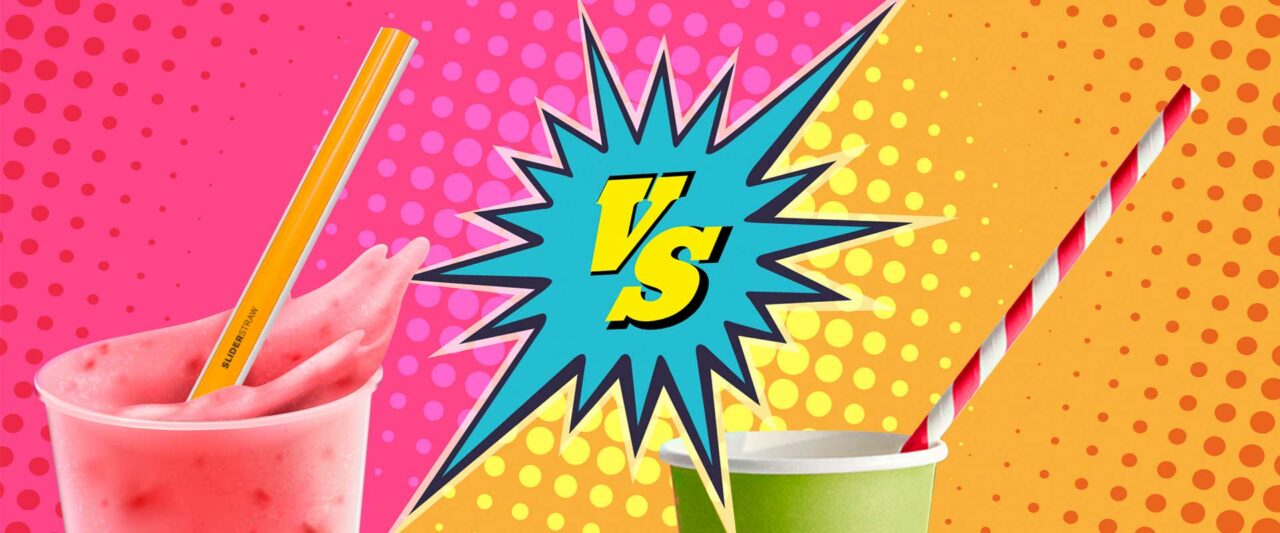Allgemein
SLIDERSTRAW vs. paper drinking straws

Paper drinking straws – a good disposable solution?
They don’t cost much, and they are colourful and compostable. But can you buy paper straws without a second thought?
Large quantities of wood are required to produce paper straws. Countless trees need to be felled and energy needs to be generated to fuel production and transport. As a result, the environmental footprint of disposable paper straws is even many times worse than that of crude oil-based disposable straws. The element is particularly problematic is the thing holding the paper straws together: the adhesive and the paper coating.
These must be treated with chemicals during production. Since the straws quickly soften in a drink and in the mouth, these components can then be absorbed by the body while drinking. The way in which paper straws quickly become soggy also detracts considerably from the enjoyment of your drink.
In addition, paper disposable drinking straws generate huge quantities of waste, which unfortunately is not always recycled in an environmentally friendly manner – and often ends up on the street or in a waste incineration facility. Disposable drinking straws made from paper do not solve the waste problem – they simply delay it.
WHY ARE THERE PLASTIC SLIDERSTRAWS?
Good question! Plastic in and of itself is not the problem. Rather, the issue lies in the misuse of plastic in the form of masses of disposable products. Large quantities of global plastic waste consist of heedlessly discarded disposable products, which are polluting our planet in huge numbers. The “bad plastic” cliché falls short of the mark. As a material, plastic has specific physical properties that cannot be equalled for numerous applications. Banning the use of plastic in generally will inevitably usher in the use of alternatives that are much worse for the environment overall. This is a form of dogma.
When used widely, plastic can actually be extremely sustainable.
